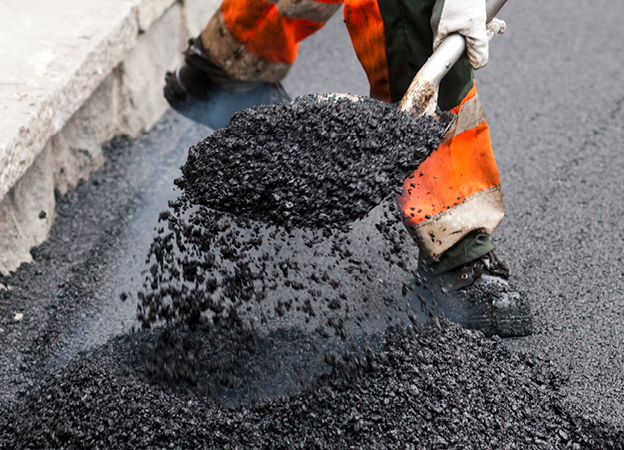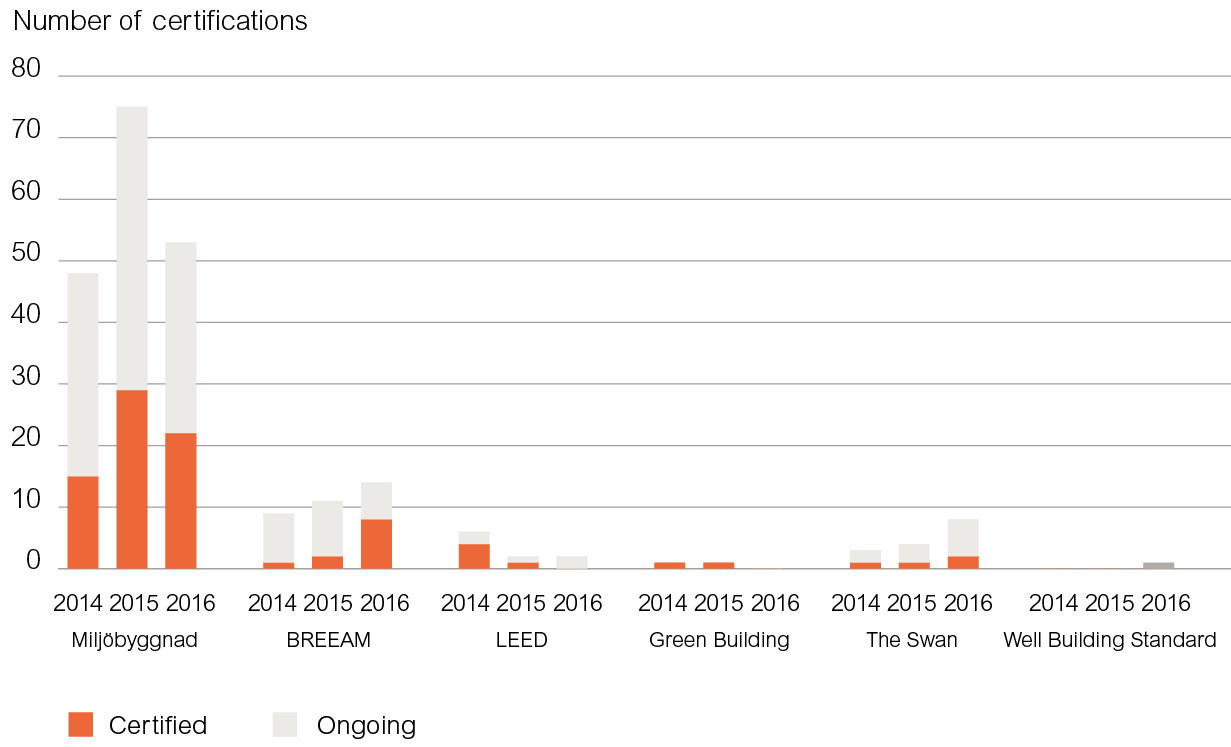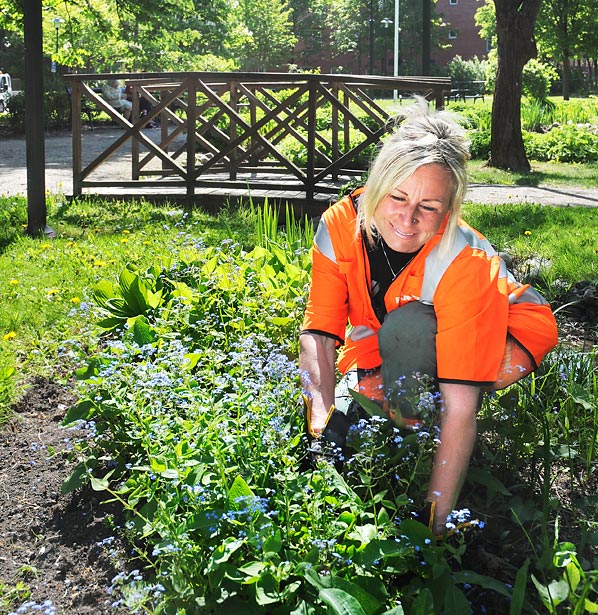
Reducing environmental impact
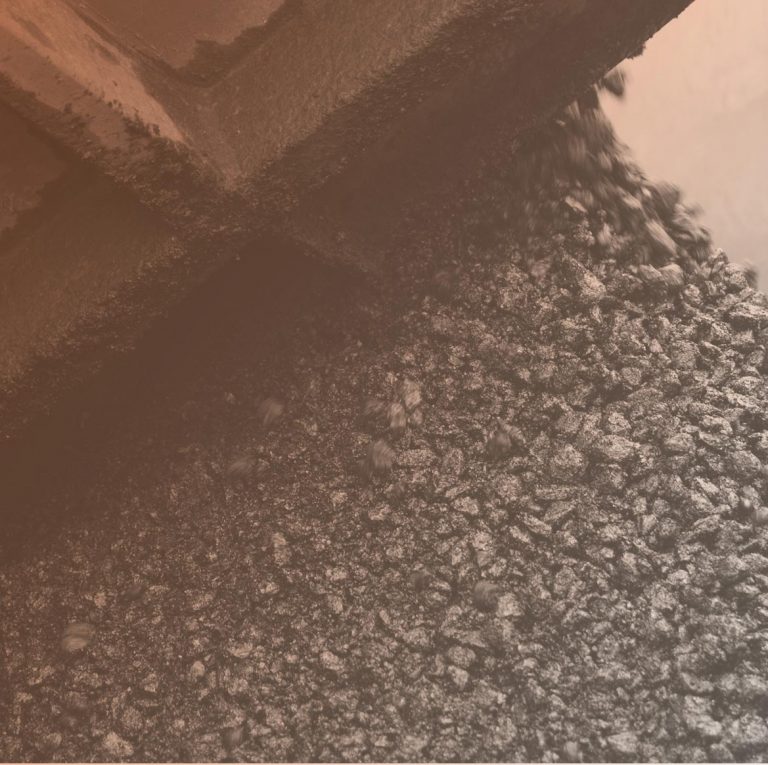 Peab’s ECO-Asfalt – a better choice for the environment
Peab’s ECO-Asfalt – a better choice for the environment
Bio-oil is used to dry and heat the gravel material in the manufacture of ECO-Asphalt, which is the part of the process requiring the most energy. The bio-oil is made from vegetable waste material from food production and is classified as carbon dioxide neutral by the Swedish Energy Agency.
The variant ECO-Asfalt plus additionally reduces the temperature of the asphalt by up to 30°C. This achieves a number of sustainable values, such as lower energy consumption and a better working environment since it reduces the amount of smoke gasses and particles. Another environmental gain is that more recycled asphalt is used in the asphalt produced.

Waste
Business area Construction, 49,802 tons
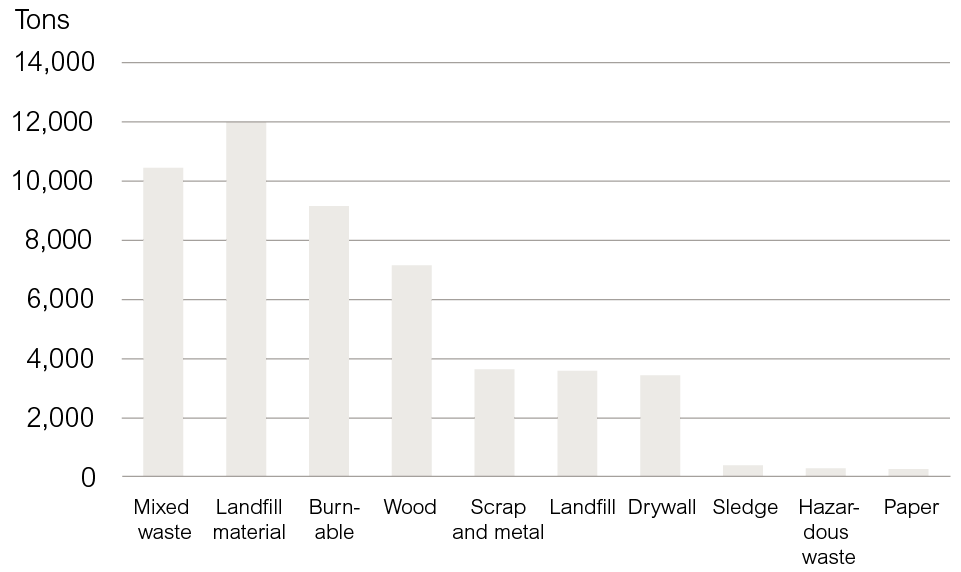
Business area Civil Engineering, 72,057 tons
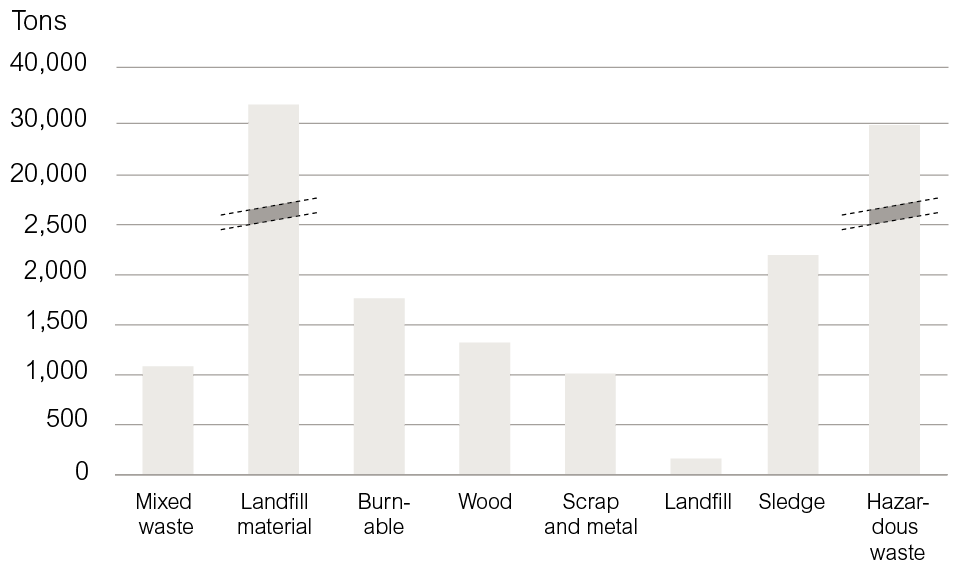
Processing method per fraction
| Fraction | Landfill (%) | Incineration (%) | Recycling (%) |
| Mixed waste | 14 | 76 | 10 |
| Landfill material | 27 | 73 | |
| Burnable | 100 | ||
| Wood | 100 | ||
| Scrap and metal | 100 | ||
| Landfill | 100 | ||
| Drywall | 50 | 50 | |
| Sledge | 50 | 50 | |
| Hazardous waste | 50 | 50 | |
| Paper | 100 |
The statistics cover Swedish operations and are limited to the waste handled by Peab’s main waste management partners. The bar diagram shows the amount of waste, sorted into fractions, from business areas Construction and Civil Engineering. The table shows how the sorted fractions are then handled by Peab’s main waste management partners.
CO2 emissons
| tons CO2 | 2016 | 2015 | 2014 |
| Scope 1 | |||
| Fuel oil | 15,743 | 23,248 | 26,986 |
| Gasoline | 677 | 758 | 756 |
| Diesel | 44,183 | 45,283 | 83,216 |
| Diesel with non-fossil blends | 39,442 | 37,087 | 10,120 |
| Scope 2 | |||
| Electricity | 935 | 945 | 1 056 |
| Scope 3 | |||
| Waste management incl. waste transportation | 44,759 | 152,483 | 25,718 |
| Business trips air travel | 1,723 | 1,118 |
The chart shows carbon dioxide emissions (CO2) for Peab’s Swedish business. Emissions from fuel have been calculated with the aid of the GHG Protocol. CO2 calculations of electricity use are based on EPD from a main supplier. CO2 for waste has been calculated with a tool developed by the industry. Business trips include air travel booked via Peab’s travel agent and CO2 information for air travel is produced according to the STS Standard.
Energy use
| GWh | 2016 | 2015 | 2014 |
| Electricity | 96,578 | 97,623 | 109,053 |
| Fuel oil | 58,890 | 86,963 | 95,703 |
| Non-fossil fuel oil | 83,552 | 28,718 | 12,480 |
| Gasoline | 2,701 | 3,079 | 3,127 |
| Ethanol | 133 | 200 | 267 |
| Diesel | 170,472 | 174,714 | 315,677 |
| Diesel 5–7% FAME | 111,366 | 27,980 | 22,454 |
| Diesel 10–50% FAME | 90,820 | 144,100 | 18,824 |
| HVO100 | 771 | 22 |
The statistics include energy use in Swedish operations. Electricity is limited to the electricity purchased from a main supplier. The electricity is environmentally declared and corresponds to an estimated 50 percent of the purchased volume of electricity in Sweden. Statistics for fuel are based on the number of purchased liters. The energy content (GWh) is for 2015 and calculated with the aid of conversion factors from the Swedish Petroleum and Biofuels Institute (SPBI) along with specifications from fuel suppliers.
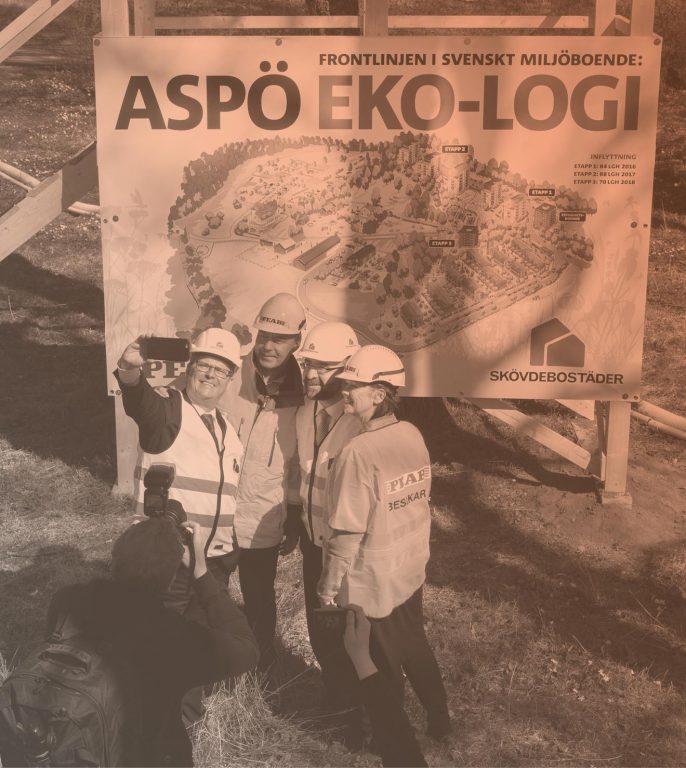 Forward-looking neighborhood with a strong environmental profile
Forward-looking neighborhood with a strong environmental profile
The neighborhood Aspö Eko-logi in Skövde, with a total of 242 apartments, will be designed in harmony with nature and have an explicit ecological profile. The idea is to combine no less than three environmental and energy certifications: the Passive House Standard FEBY12, Swan environmental certification and Miljöbyggnad Guld. The building facades will be made primarily from natural materials and the plans also include solar energy panels that will produce warm water and electricity, recycling household stormwater for watering vegetable gardens and a charging station, in preparation for an electric car carpool.
The first tenants moved in during 2016 and the entire Aspö Eko-logi project will be completed in 2018.
